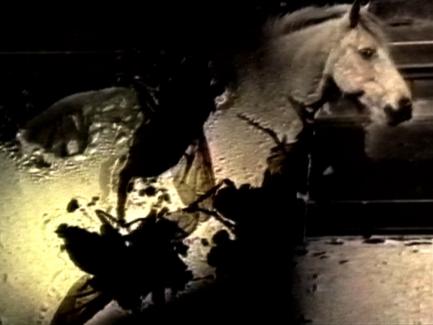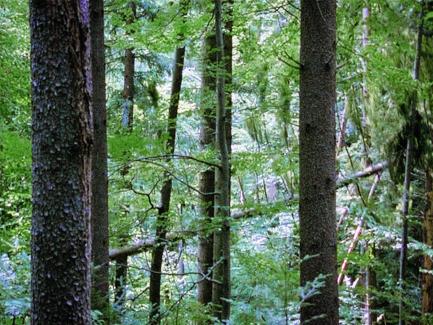Colour Poems
Margaret Tait (1974; 11 mins., 20 secs.)
Margaret Tait described Colour Poems as “a poem that started in words and continued in images.” A series of nine short films linked together, Colour Poems revolves around different verses written by Tait, which she slowly and melodically reads over the images. The film begins with Tait’s observations of the Spanish Civil War and its effect on the Scottish citizens who fought in the war as well as those who stayed behind. In addition to Tait’s verses, the sound in the film consists of a whistled traditional Scottish ballad. Accompanying music, recorded sounds, and other human voices are heard with vignettes of the town and domestic scenes of Tait’s native Orkney Islands. Tait creates a relationship between sound and images through the playful use of speed and movement that is purposefully not linear. Instead, the film uses a sequence of seemingly unrelated images, such as a boat passing or the leaves on a tree moving in the wind, to create individual fragments of a collective memory and a shared history. These fragmented images are seen through Tait’s perspective, which traces the meditative and sorrowful changes within her community. Interwoven throughout the film are hand-colored scratched drawings that are surprising yet evocative in their rawness as they reverberate in combination with the audio. Alongside her animations, Tait employs handwritten and cutout text for titles and section breaks that lend a homemade quality to the film. These methods of working directly on film stock and using handcrafted titles were part of her pioneering and idiosyncratic style. While appearing familiar and endearing, the techniques were used in tandem by Tait in Colour Poems to create a powerful testimony of her homeland that is both political and intensely intimate.
About Margaret Tait
Margaret Tait (1918–1999) was born in Kirkwall, Orkney, in Scotland, which later became a primary source of inspiration for her work. Tait studied medicine at Edinburgh University, graduating in 1941. She joined the Royal Army Medical Corps in 1943, where she served in Sri Lanka, Malaya, and India during the Second World War. After the war, Tait began using her work as a physician to gradually develop and finance her practice as an artist. She enrolled at the Centro Sperimentale di Photographia in Rome between 1950 and 1952, where she began to create her distinctive style as an experimental and uncompromising filmmaker and poet. Although better known for her films, Tait identified first as a poet, describing her films as “film-poetry.” Her films and poetry often drew from her scientific and medical training. In 1954, following her return to Scotland, she founded her own production company, Ancona Films, in Edinburgh. In addition to producing and largely self-financing over 33 films, Tait published three poetry collections and wrote essays and short stories throughout her life.
Written by Merritt Barnwell (SY 2022)


